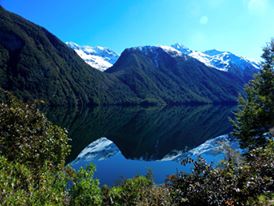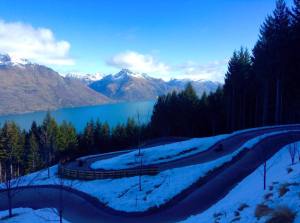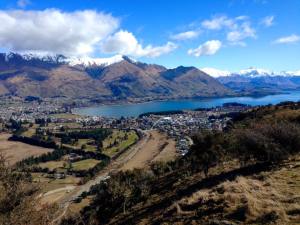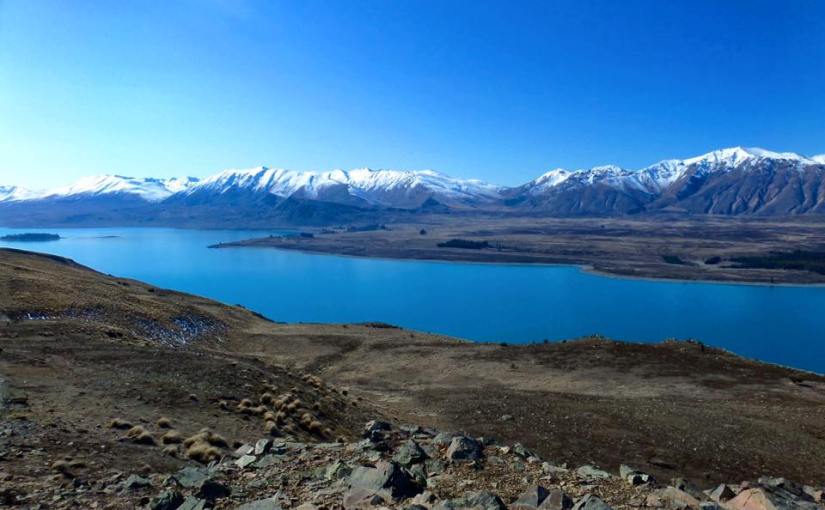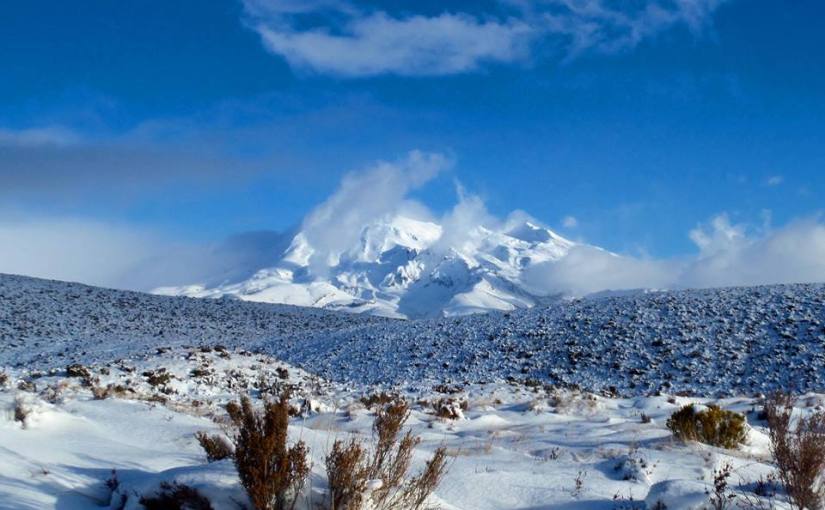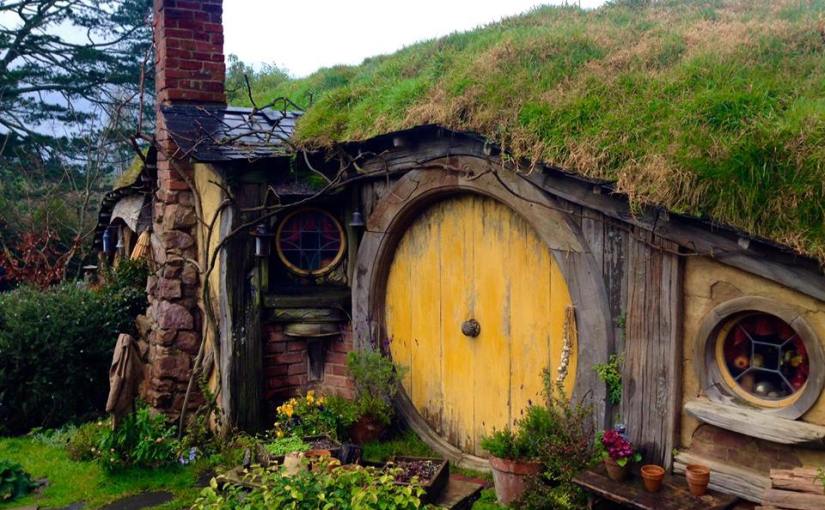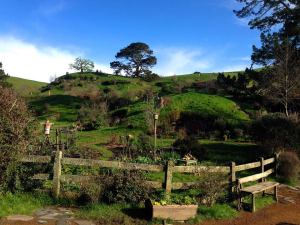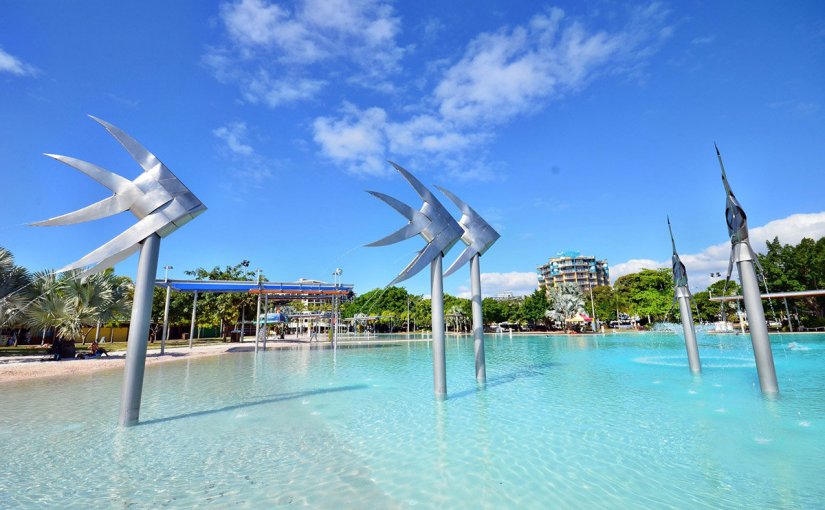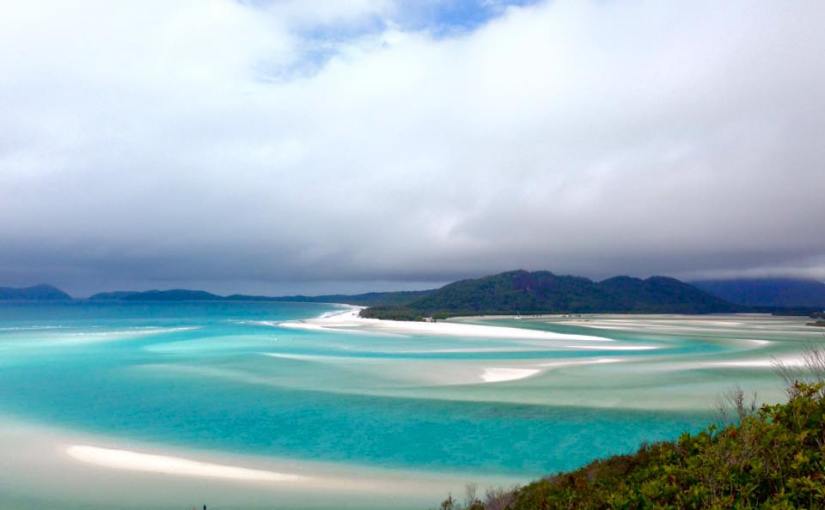It was with mixed emotions that we arrived in Queenstown, the final destination of our trip. Of course we were excited to be in New Zealand’s tourist mecca and adventure capital. With trips to the stunning Milford Sound and legendary Fergburger among our lineup, it’s safe to say it was going to be a good week. But the prospect of our impending journey home and the conflicting thoughts it inspired constantly hung over our heads. Excited to see our families. Nervous about starting (or in my case, finding) work. Sad that the trip of a lifetime had gone by so quickly. And downright depressed at the thought of the 30+ hour journey home. Despite all this we were determined to have the best week ever, and go out with a bang. And that’s just what we did.
Things got off to a great start, with our first evening consisting of a trip to Fergburger followed by movie night at our hostel (Southpaw – worth a watch!). We had managed to bag beds at the incredibly in demand Adventure Queenstown Backpackers, and were impressed from the off-set. Flash ensuite bathrooms, free unlimited WiFi, personal USB charging points, reading lights, free towels, two (!!!) pillows. It was clear to see why they are always fully booked. You can even rent GoPro’s and iPads free of charge. Need I say more? With Fergburger ticked off the list (not that we were ruling out a return visit, it was so delicious), we turned our attention to the rest of our itinerary. Milford Sound, skiing and the gondola and luge track were our top priorities, so bright and early on our first morning we set about inquiring at various tour companies. We had little difficulty in organising a day trip to Milford Sound, but unfortunately the same cannot be said for skiing. A clear indicator of our inexperience, we had budgeted $250 for two days of lessons and gear rental. We were optimistic, to say the least. Mentally calculating the total cost as a member of hostel staff reeled off the daily prices, we were shocked. It came to $400. Perhaps that’s just one particular resort, we reasoned. But, after leaving several tour companies having been quoted a similar figure, we were forced to concede that we just had not budgeted enough. As total beginners one days worth of lessons would get us nowhere, and so seemed totally pointless. Perhaps it was time to reconsider our plans.
Commonly tipped to be the most stunning part of New Zealand, we had high hopes for Milford Sound and the Fiordland National Park. A casual 300km from Queenstown, we were praying it was worth the journey. For a mere $30 extra we upgraded to the VIP tour package, meaning we were treated to reclining seats, extra leg room and a glass roof to take in those mountain views. Comfort, we decided, was the number one priority if we were going to spend 10 hours on a bus. It was a day full of surprises. The scenery as we passed through the National Park was so utterly breathtaking that, in all honesty, Milford Sound itself didn’t quite measure up! Not that this mattered, as our friendly bus driver stopped plenty of times to allow us photo opportunities:
Once we had finally arrived at Milford, it was time to embark on our scenic cruise. 1 hour and 45 minutes seems like an awfully short time after making such a long journey, but it was totally worth it. We couldn’t have picked a more beautiful day to enjoy all that Milford had to offer:
It’s no surprise that this is commonly considered to be one of the most beautiful parts of New Zealand, and indeed the world. To say that we were glad we had decided to make the trip would be an understatement. Money and time well spent! By the time we arrived back in Queenstown it was 8:30pm, so cooking was clearly out of the question… instead, we decided to test out Ferburger’s rival restaurant, Devil burger. Akin in price and quality, the only thing that sets them apart is the wait time. In the 14 years that it’s been open Ferburger has achieved worldwide recognition for it’s food, becoming a bustling tourist hub. Nothing testifies this better than the queue, which almost always stretches halfway down the street. Conversely Devil Burger is much lesser known, meaning you are able to order instantly and actually sit down to eat your food! The burger was delicious, but it didn’t quite measure up to Fergburger. Perhaps it’s the atmosphere, and the heightened anticipation that comes with the half an hour wait. Whatever it is, the guys behind Fergburger must be raking it in. They’ve even set up Fergbakery and Mrs Ferg Gelataria next door (of course, we had to sample both. They’re equally delicious). As you can tell, it didn’t take us long to figure out that Queenstown is more than adequately equipped for the hoardes of hungry skiers and revellers that are constantly passing through.
On that note, I’ll return to our skiing predicament. $250 may not have bought us two days of ski lessons, but it sure paid for a lot of alternatives, and then some! After a lengthy peruse on bookme.com (New Zealand’s Groupon equivalent), we had bagged ourselves a host of bargains. Ice skating for $10, jet boating for $59, and entry and a cocktail at Queenstowns ice bar for $15, plus a trip to the cinema. More than enough to keep us entertained. Speaking of entertainment, Josh got to witness my ice skating skills for the first time, much to his amusement. Still, I was proud. I managed to skate the entire circumference of the ice rink without clinging to the sides or falling over. A personal best! With so many activities on offer it’s easy to overlook the beauty of Queenstown itself. Bordered by snowy mountains and the beautiful Lake Wakatipu, it’s certainly a beautiful place to explore. As well as strolling around the lakefront we hiked up Queenstown hill, which afforded some beautiful views of the landscape:
But that clearly wasn’t enough for the fitness fanatics among us (Josh, of course, not me) who decided that running would be an even better way to see the scenery. My jaw dropped when, after six months of no exercise, Josh returned and informed me that he had run 16km to the airport and back. In my current shape I think I’d struggle to run to the end of the road! Amidst all the fun there were a few grown up duties to attend to, such as car insurance and phone contracts. A taste of reality! With so much going on it’s no surprise that our final day was upon us before we knew it, and what a final day it was.
We had reserved (what we hoped to be) the best activities for our final day: the jet boating and the luge. As we boarded the 750 horsepower vessel we were both excited for the adventure and anxious that we wouldn’t be able to keep our breakfast down. After one hour of intense twists and several 360 degree turns, it was a close call, but it was most definitely worth it. It was without a doubt one of the most fun things we had ever done, so in a way not being able to ski turned out to be a blessing! Our awesome day continued with the luge run. Racing down an 800 metre track laid out on the sharp gradient of a mountain, what’s not to like?! The views weren’t too bad either:
Of course, Josh disregarded the racing rules, promptly overtaking me despite my best efforts to block him, and continuing to do so on every race (we had 5). I’m not one for a cheesy catchphrase but I had to admit, theirs was pretty spot on: once just isn’t enough! Even five wasn’t enough! Our final day had been everything we wanted, and we had definitely achieved in our goal of ending on a high.
With that, we come to our final morning in New Zealand. Or mourning, I should say! One thing we were definitely not sad to say goodbye to was the assortment of dirty, holey, smelly clothes and shoes we had been lugging around with us for half a year. With our bags considerably lighter, and our hearts heavy, there was time for one final fergburger feast, before we made our way to the airport. It hasn’t sunk in yet, and probably won’t until we have been settled at home for a while, that the journey is over. But, without question, this adventure has inspired a thirst for many more in the future. See you in three flights and about thirty eight hours time, UK!

